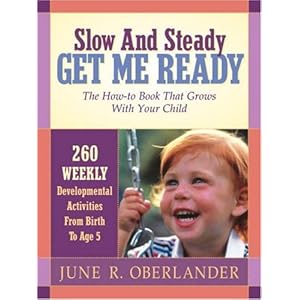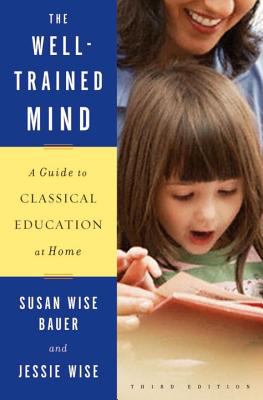We are leaning toward homeschooling our kids, though it's daunting to consider. What do I do? What do I teach? How do I learn it all? What's the best way? There are countless philosophies, ranging from one extreme to the other with everything in between. I've barely scratched the surface in discovering my options, let alone exploring them. Fortunately, the whole idea of homeschooling allows for endless flexibility.
For my birthday last month, Keenan gave me a resource I've been curious about:
The Well-Trained Mind: A Guide to Classical Education at Home by mother-daughter duo Susan Wise Bauer and Jessie Wise. I was impressed at the biographical merits of these women. Their experience and education more than qualify them as guides for parents who are eager to give their children a classical education at home.
What is Classical Education?
If you're like me, you're not sure exactly what is meant by "classical education." This post provides but a scant overview, based on what I've read so far. Here is a snippet from the Introduction (p. xxii):
What is a classical education?
It is language-intensive -- not image-focused. It demands that students use and understand words, not video images.
It is history-intensive, providing students with a comprehensive view of human endeavor from the beginning until now.
It trains the mind to analyze and draw conclusions.
It demands self-discipline.
It produces literate, curious, intelligent students who have a wide range of interests and the ability to follow up on them.
The Well-Trained Mind is a handbook on how to prepare your child to read, write, calculate, think, and understand.
How is the Curriculum Structured?
This book is a textbook in itself. It "provides information on teaching all the subjects in the classical curriculum for all twelve grades -- literature, writing, grammar, history, science, math, Latin, modern languages, art, music, debate, and more" (p. xxv).
The structure is based around a three-part process to training the mind, called the classical pattern of the trivium (from pp. 13-14, a bit reworded):
- The "grammar stage" (grades 1-4) prepares the mind to absorb information through memorization of facts: rules of phonics and spelling, rules of grammar, poems, the vocabulary of foreign languages, the stories of history and literature, descriptions of plants and animals and the human body, the facts of mathematics, etc.
- The "logic stage" (grades 5-8) builds on the facts absorbed in the first phase. It is a time when the child begins to pay attention to cause and effect, to the relationships among different fields of knowledge, to the way facts fit together into a logical framework. At this age, the mind naturally begins to think more analytically. A student is ready for the logic stage when the capacity for abstract thought begins to mature. During this time, the student learns algebra and logic, and begins to apply logic to all academic subjects.
- The "rhetoric stage" (grades 9-12) is the final phase of a classical education, and builds on the first two. At this point, the high-school student learns to write and speak with force and originality. The student of rhetoric applies the rules of logic learned in middle school to the foundational information learned in the early grades and expresses conclusions in clear, forceful, elegant language. The student also begins to specialize in whatever branch of knowledge attracts her; these are the years for art camps, college courses, foreign travel, apprenticeships, and other forms of specialized training.
I find it interesting how the system is centered around history: "To the classical mind, all knowledge is interrelated... A classical education [takes] history as its organizing outline, beginning with the ancients and progressing forward to the moderns in history, science, literature, art, and music" (pp. 14-15). The authors recommend that the twelve years of education consist of three repetitions of the same four-year pattern: the ancients (5000 B.C. - A.D. 400), the medieval period through the early Renaissance (400-1600), the late Renaissance through early modern times (1600-1850), and modern times (1850-present). "The child studies these four time periods at varying levels -- simple for grades 1 through 4, more difficult in grades 5 through 8... and taking an even more complex approach in grades 9-12." I was fascinated by the descriptions and examples of how the other areas of the curriculum are linked to history studies, but this post is already too long to share!
Children Can Do Hard Things
The authors emphasize that the benefits of this education are not exclusively academic:
Rigorous study develops virtue in the student: the ability to act in accordance to what one knows to be right. Virtuous men (or women) can force themselves to do what they know is right, even when it runs against their inclinations. Classical education continually asks a student to work against her baser tendencies... in order to reach a goal -- mastery of a subject (p. 17).
As a Suzuki violin teacher who requires daily practice from my students, these words couldn't ring truer. Yes, working daily at something difficult but worthwhile gives a student proficiency, but even more valuable are the dozens of life skills absorbed throughout the process.
Still Daunted?
I am. Truth be told, this book hasn't helped the intimidated parent factor much. But the authors insist that any parent can succeed.
All you need to teach your child at home is dedication, some basic knowledge about how children learn, guidance in teaching the particular skills of each academic subject, and lots of books, tapes, posters, kits, and other resources. This book will provide you with everything except the dedication (p. xxii).
Maybe I can muster that. ;) I don't know yet if classical education is a match for my family, but it's been interesting to study. In fact...
STAY TUNED!
The first item that popped out at me from the Table of Contents was the little section called
Preschool: Birth to Three. This is what I originally intended to blog about today, but as I got going, it seemed a basic introduction was necessary. You can watch for that post next week.
Do you know any homeschoolers who follow a classical education? Please share your thoughts!



































